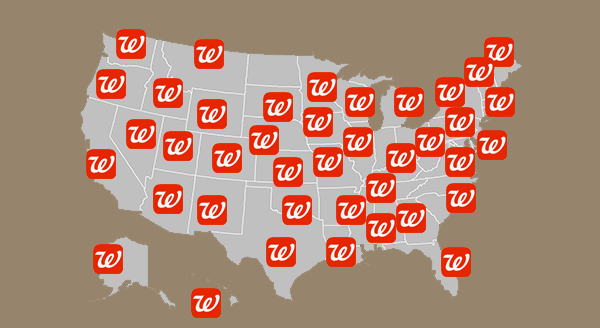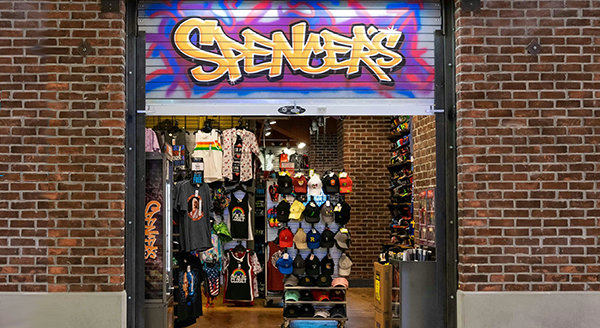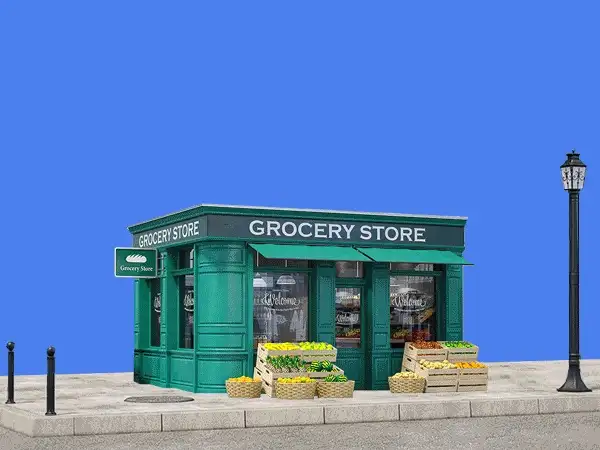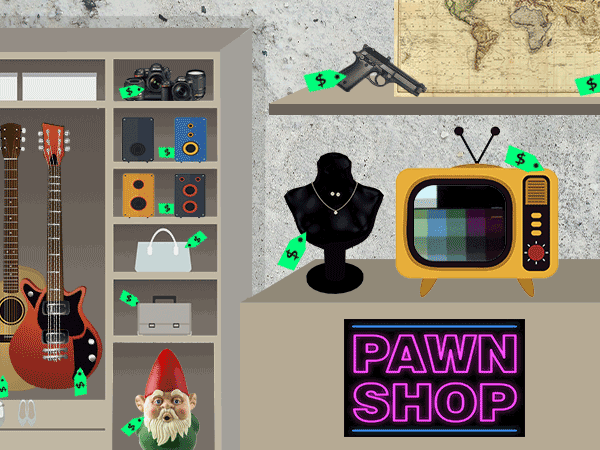Retailers, casinos, and grocery stores use a trick called temporal distortion to make you forget about the real world.

The week before Christmas last year, I went to a mall in my hometown.
I wanted to buy a gift for my brother and browse through Barnes & Noble. Instead I purchased a smoothie from a vendor by the escalator and an overpriced cookie from the food court. I didn’t find any Christmas presents — I found a Korn T-shirt at Hot Topic that would’ve been a solid gag gift, but it was too large. Or did I see it at Spencer’s? The stores all blended together.
When I returned to my car in the parking lot, after a journey through a walkway brightened by artificial lighting, I wasn’t sure if I’d been shopping for 30 minutes or an hour. I’d lost track of my surroundings and bought something I didn’t need.
In other words, I was an ideal customer.
This experience is shared by millions of shoppers every year — and it’s by design. Malls, department stores, grocery stores, and even casinos enlist tactics that cause “temporal distortion,” making us lose track of time and spend more money.
A time-free fantasy zone
When designing their layouts, malls took a cue from an industry that has perfected the art of separating people from their money: casinos.
Bill Friedman probably knows more about casinos than anybody else on the planet. He’s a former gambling addict, the only person to manage two casinos on the Strip at the same time, the author of two seminal books about the casino industry, and a researcher who performed empirical studies on dozens of Nevada casinos and interviewed some of the earliest casino operators in the state.
Friedman confirms an oft-cited detail about casinos: There are typically no clocks.
Back when Nevada first legalized gambling, in 1931, the casinos did have clocks. Over the next few years, however, the owners heard complaints from the biggest gamblers: Remove the clocks, or they’d stop coming. The reason why?
“[The gamblers] don’t want time,” Friedman told The Hustle. “They are in a fantasy and an escape world.”
Roulette at Nevada’s New Meadows Club in 1931. (Bettmann/Getty Images)
Friedman says he and other casino operators never unlocked an innovation that caused people to gamble more (not even free alcohol, he says). But they did what they could to eliminate distractions that interfered with the gamblers’ fantasy states.
In the mid-1970s, for instance, when Friedman started managing Castaways and The Silver Slipper, he identified a major obstacle: natural light.
One side of the Castaways casino was covered in glass. Every morning when the sun peeked over the buildings on the Strip, the slot machines and tables emptied. Some 85%-90% of customers left the gambling floor.
“They realized it was daytime and they had a world they had to go back to,” Friedman says.
Friedman bought a dark plastic covering for the glass. His security team raised it over the glass about five minutes before sunrise every morning, blocking out most of the light. The daylight exodus ceased.
Under Friedman’s management, Castaways and The Silver Slipper became two of Vegas’ most profitable casinos in the 1970s and 1980s. He trained his staff not to interrupt gamblers who were in the zone — if somebody earned a comp, a staffer was to quickly tell them they’d like to buy them a free meal and let the customer claim it when their “fantasy” ended.
“You don’t disrupt,” Friedman says.
Castaways thrived in the 1970s and 1980s. It was imploded in 2006. (Ethan Miller/Getty Images)
Friedman shared many of his techniques in his books and as a casino consultant. Some of his top design principles included:
- Intricate spacing: Low ceilings, maze-like designs, and intimate nooks for slot machines allow customers to slow down and feel a busy energy as they pass through a casino — yet still have room to carve out their own private domains by the machines.
- Mundane and medium sound levels: Sensual overload and environments in which sounds bounce off interior surfaces confuse customers. Most casinos use bland, low-volume music or ambient noise — researchers have found that songs provide gamblers a cue of how much time has passed, a big no-no.
- Monotonous design: Friedman believed that the machines and tables should be the focal point of any casino. Decor shouldn’t be so elaborate that it draws attention away from them.
With the atmosphere just right, gamblers become engrossed in the game in front of them, causing their “field of consciousness to break down,” according to sociologist Gerda Reith.
“In the arena of chance, as though under the sway of a magnetic field, the passage of time freezes into repetition, space contracts, and the value that accrues to money is obliterated,” she wrote in a thesis on gambling in western society.
Raymond Lavoie, a New Mexico State University marketing professor, studied gamblers and flow, a state of mind where a person is so attentive to a task they lose track of everything else, including time. He found that gamblers who entered a flow state — caused by a distraction-free environment and a focus on a stimulating task — spent more time and money gambling than those who didn’t.
They kept going because it felt good, so much so that despite losing more money overall they enjoyed the experience more.
“You’re not thinking about the future,” Lavoie says, “you’re just enjoying this moment.”
The longer you stay, the more you spend
Casinos are unique in their aim. No other industry builds a world designed to maintain a customer’s fantasy so that they continue to partake in an activity that, in the long run, advantages the house. But retailers share at least one common goal with casinos: They want to keep people inside.
“The goal of the retailer is to make sure that they find ways to increase the time we spend in the store, the number of items we see at the store, and end up buying not just what we came in for but ideally a few additional things,” says Vassilis Dalakas, a business professor at California State University San Marcos who has researched consumer psychology.
Shoppers at London’s Westfield Shopping Centre. (Oli Scarff/Getty Images)
Extra time in the store, in fact, can be nearly as dangerous to one’s wallet as extra time in the casino. When we shop, we have about 20 minutes before our brains lose the power to keep us from making questionable financial decisions, according to researchers from Bangor University in the United Kingdom.
Using MRIs to gauge “the neural basis of decision making,” they found that after 23 minutes supermarket shoppers began using the emotional part of their brain rather than the cognitive part. That switch made it harder for people to consider costs and made them more susceptible to marketing bargains.
After 40 minutes, their brains effectively shut down. They struggled to make any logical decisions.
The Hustle
But grocery stores face an uphill battle in persuading customers to stick around. Most people go to the grocery store knowing the items they want and trying to get out quickly. To keep shoppers around longer, grocers and other retail stores employ several tactics and design elements similar to the casino industry:
- Removing distractions: There are few clocks and windows, so customers won’t be reminded of the outside world. Boring designs draw attention to the products, especially at grocery stores and discount department stores.
- Building a maze: These layouts, most prominently deployed at Ikea, force customers to move through the store slowly and see as many products as possible.
Retail stores also use sound and music to manipulate the environment. A study from the early 1980s showed that slow-tempo music led to shoppers moving more slowly through the store and spending more money than if fast-tempo music played. (There wasn’t a huge difference in results between slow-tempo music and no music at all.)
“It’s almost mood maintenance,” says Theodore Noseworthy, a York University business professor who has studied the impacts of sound. “They’re trying to keep you in this positive state and almost in flow [so] that if you’re shopping, [you] just stay shopping.”
The Hustle
Whether it’s inside a department store or a casino, it’s now harder than ever to minimize distractions and foster a sense of lost time and place. Blame smartphones.
A ping from a text or email can draw a person’s eyes to a screen, giving them an instant reminder of the time and something else they could be doing.
“When you pull that thing out, it breaks you from that immersive environment,” Noseworthy says.
The good news for retailers and casinos, though, is they may soon be able to use technology to create an environment more immersive than anything we’ve seen.
No time in the future
When I asked Lavoie, the academic who studies flow state, for another area ideal for creating flow besides casinos, he offered an immediate answer: virtual reality.
People who don VR headsets don’t see or hear anything other than the virtual world in front of them. If VR takes off, retailers, marketers, and casino operators will use it to their advantage, building mesmerizing simulations for people to shop, buy, and gamble in.
There would be no human distractions, such as friends or family members telling someone it’s time to stop gambling or shopping. And there would certainly be no clocks.
“You don’t have to worry about any of that,” Lavoie says. “This is infinitely better than that. It narrows your attention fully.”
It also sounds dystopian. But if learning about this worrisome consumer future makes you queasy, at least take comfort in knowing that it’s natural to lose track of time and space.
As you get older, Noseworthy reminded me, it feels like time moves faster. In reality, it’s just that most of our days are mundane and monotonous, blending together and helping us lose track of time.
Casinos and malls may be time warps. But so is life.





